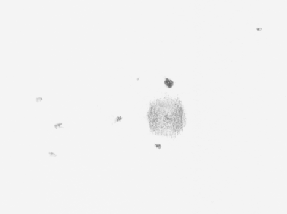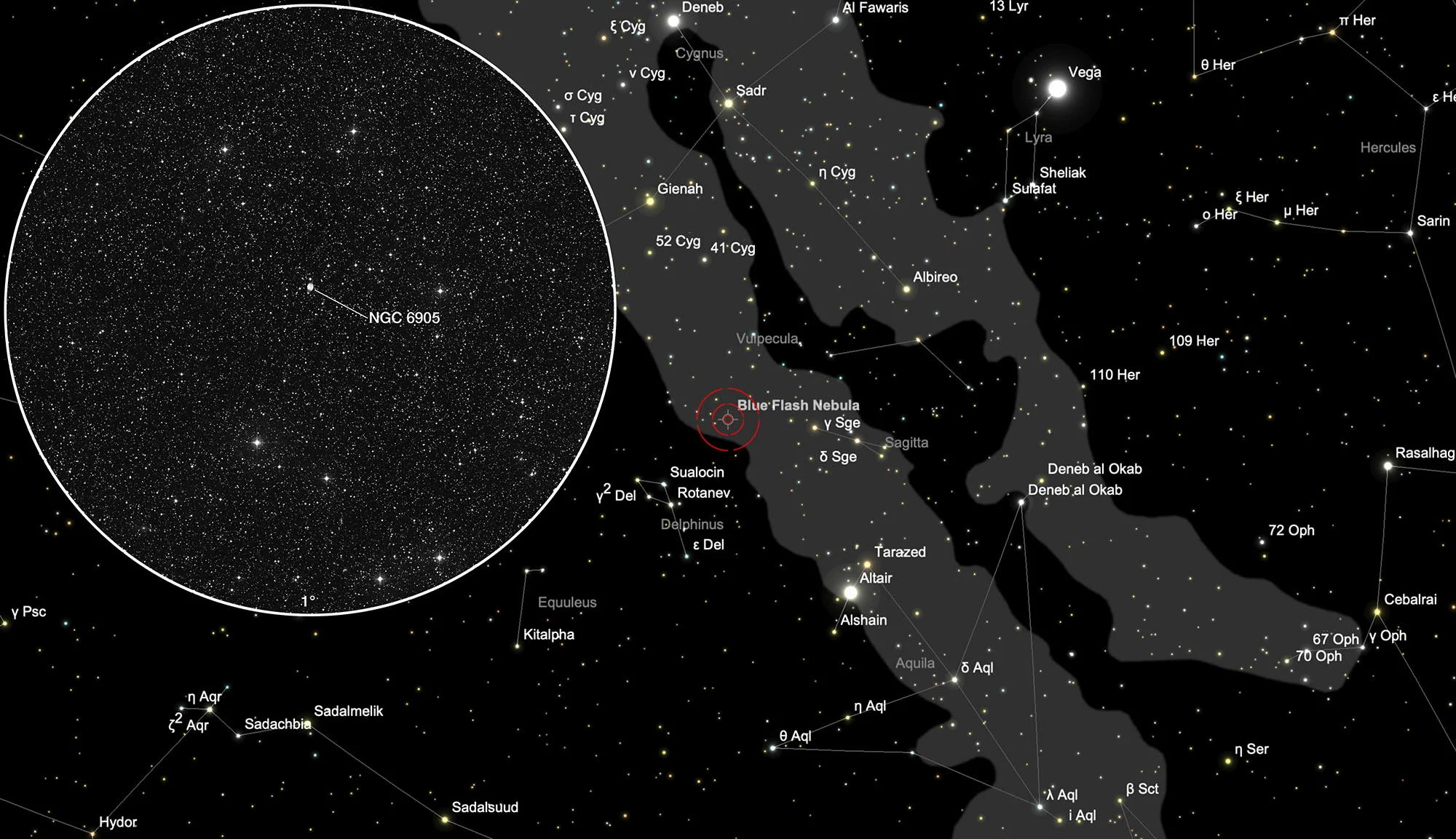Cocktail (NGC 6905)

Object Description
The planetary nebula (PN) NGC 6905 provides a fine example of a little-known but bright and aesthetic PN. Winds emanating from the central star (TS) collide with the slowly expanding halo formed during the star's red giant stage originated. The collision energy is large enough to excite the matter to glow (shock ionization). Since the ZS is surrounded by an equatorial ring of gas and dust, the stellar wind can only escape toward the poles at higher latitudes. A collimated stellar wind occurs. This also creates the shape of the nebula (see false colour image Fig. 2). In the E and W the nebula is delimited with a bright border, in the N and S the delimitation is not so clear. Spectroscopic velocity measurements revealed that the stellar wind is escaping at high velocity here. Today one can explain the appearance of the nebula very well with models that include the already mentioned shock ionization.

The Voronstov-Velyaminov morphological classification scheme used by PN's gives NGC 6905 type III+III; i. e. a pane with irregular brightness distribution with two areas. We can confirm this when we look at the CCD false colour image (Fig. 2). Astronomers from the Astrophysical Institute of the Canary Islands have also observed Ansae. On our CCD recording one can only guess.
The central star is an O VI star. These are stars in the pre-white dwarf stage. They have an extraordinarily hot surface and can be recognized by particularly strong emission lines of triple ionized oxygen (O VI). These eponymous O VI lines are located at 3811 and 3834 Angstroms. Photometric measurements of the ZS revealed fluctuations in brightness around its mean value of 15.5 vmag. This then also explains the visibility of the star in the 20 cm telescope. The variability is due to pulsations of the star.


| Designations | PN G061.4-09.5: NGC 6905, PK 61-09.1, ARO 75, He 2- 466, VV 257, VV' 535 |
| Right Ascension (J2000.0) | 20h 22m 22s |
| Declination (J2000.0) | +20° 06' 18" |
| Dimensions | 40." (optical) |
| Distance | 1.0 kpc |
| Radial Velocity | -8.4 ± 1.7 km/s |
| Expansion Velocity | 43.5 (O-III) km/s |
| C-Star Designations | AG82 408, CSI +19-20201 0, HD 193949, PLX 4855 |
| C-Star Magnitude | B: 16.3, V: 15.7 |
| C-Star Spectral Type | WC-OVI, WC 3 |
| Discoverer | HERSCHEL 1831 |
Where can you find a cocktail in the sky?
The nebula is relatively easy to find. To do this, set the star at the top of the constellation Sagitta: η Sge with 5.1 v-mag can already be seen in the weak viewfinder and is usually even visible to the naked eye and can therefore also be set with a Telrad finder! If you centred η Sge in a wide angle eyepiece, fix the declination axis and sweep east approximately 4 degrees and 3 arc minutes. On 27 July it is in opposition to the Sun and crosses the meridian at local midnight.
The PN appears to be in a leg of an isosceles triangle 10-12 mag brighter asterisks. This triangle represents the top of a cocktail glass (see fig. 1). The whole thing then looks like a cocktail served with a slice of lemon (the PN itself) or a scoop of ice.
Visual Observation

200 mm aperture: Once the cocktail is found and centred, a magnification of at least 200x should be used. If the seeing allows it, it is even worth going over 300 times. The structure described above can then be seen. In the E and W a brighter, well-defined edge, in the N and S, however, a rather blurred, diffuse transition to the sky background. In the drawing on the right, the contrast is slightly exaggerated to better emphasize the faint details. A nebula filter (OIII, UHC or H-beta) did not bring us any improvement in contrast with this PN. To our astonishment, the central star was already clearly visible in the 200 mm telescope with averted vision. Although it is specified as v-mag 15.5, it can be quite a bit brighter because of its variability! — 1997, Philipp Reza Heck
400 mm Aperture: In the 21 mm Tele Vue Ethos eyepiece, the planetary nebula is already visible quite well without an O-III filter. In the 9 mm Nagler eyepiece, the central star becomes apparent, and the fact that the edge is slightly brighter is also noticeable. The nebula appears round. The two faint lobes are not discernible. — 400 mm f/4.5 Taurus Dobsonian, Glaubenberg, SQM 21.0, 11. 10. 2023, Bernd Nies
500 mm aperture: The shape typical of a PN comes into its own with an opening of 500 mm. On the CCD image (Fig. 2) one can clearly see the areas of higher density in the W and E periphery of the nebula, while in the N and S the fast stellar wind almost can escape unhindered into interstellar space. — Sternwarte Bülach, 1997, Stefan Meister
